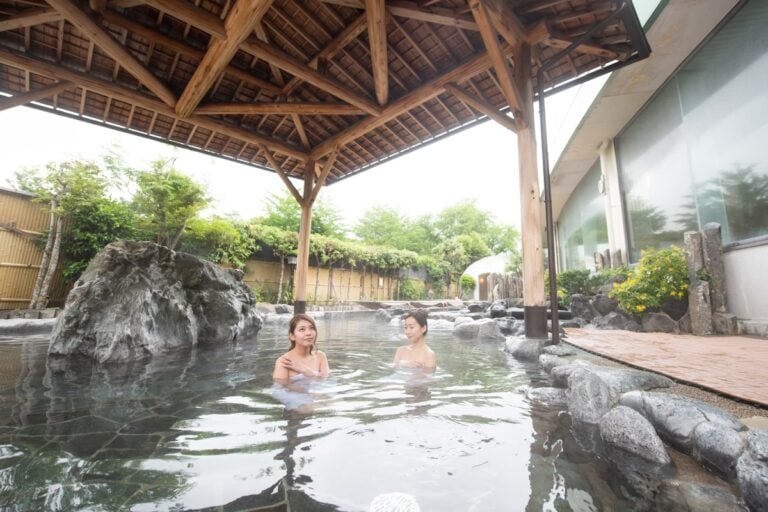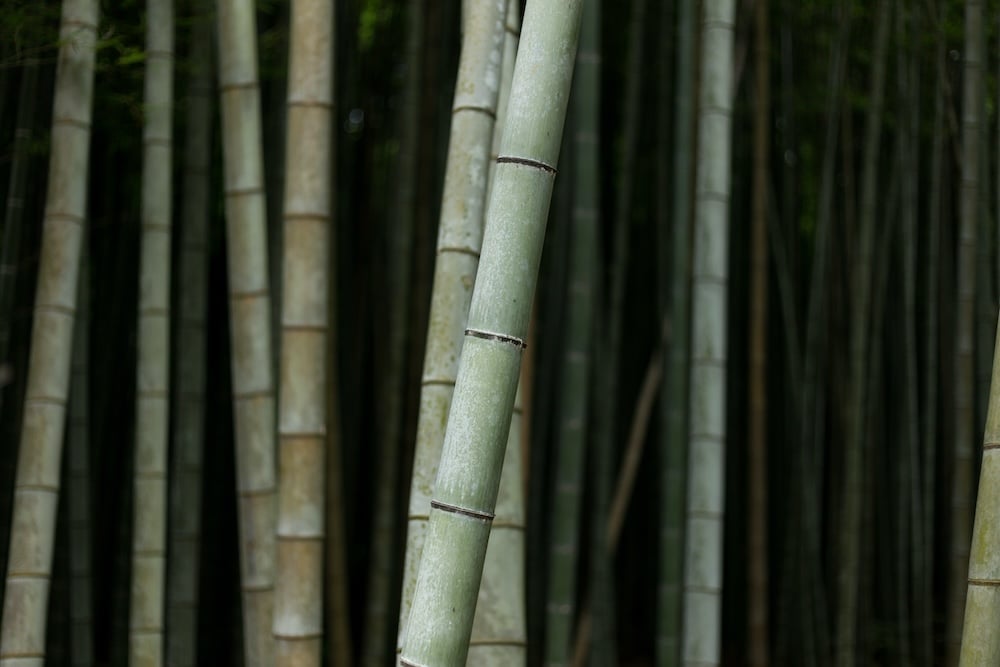
Japan has quite the reputation for being a country addicted to work. After living here for 4 years, I can attest that this fame is well deserved. My coworkers regularly work hours upon hours of unpaid overtime every week. Naturally, with a rather unhealthy work-life balance comes stress…a lot of stress.
But never fear! Japan has some remedies for the nationwide stress epidemic.
1. 温泉

An 温泉, for those of you who aren’t in the know, is a natural hot spring. Being the volcanic island chain that Japan is, there are 温泉 towns all over the country. The water is often said to have beneficial qualities and there’s a big focus on connection to nature – either in location or use of natural materials. 銭湯 are similar to 温泉 but the water is heated artificially. To be honest though, the end result for the user is pretty much the same.
You’ve probably heard before, but you go naked into 温泉. I personally have no problem with this and find the honesty of the whole process relaxing in itself. There’ll be a washing area near the entrance, and you should wash your entire body there. Then, choose the bath you want to relax in and get stuck in.
I can say with absolute clarity that 温泉 is my favourite part of Japanese culture. No matter how hard of a week I’ve had, I can feel the stress melt away in the soothing pools of 温泉. The best bit is, they’re all over Japan. Even if a place doesn’t have a natural 温泉, there’s likely a 銭湯 not too far away. I was in Tokyo recently and found a charming 銭湯 in the middle of Shinjuku – a haven of calm amongst the chaos.
Japan is a country built on ritual and going to 温泉 is no different. The whole process, from undressing to pre-bathing wash to enjoying the baths, is like a relaxation ritual that’ll leave your mind and body cleansed by the end.
If you haven’t already, I implore you to give 温泉 a try while you’re in Japan. Here are some good 温泉 to head to in the Tokyo, Kyoto, and Osaka areas:
Near Tokyo: 箱根温泉 (Hakone onsen)
What’s Unique: Hakone onsen is located in the Fuji-Hakone-Izu National Park and offers stunning views of Mount Fuji and Lake Ashi. The town is known for its hot spring resorts, traditional ryokans, and beautiful natural surroundings. Hakone also features various themed 温泉, including 黒湯 (black sulfur spring) and 足の湯 ashinoyu (footbath) experiences. You can enjoy a relaxing soak while taking in the scenery of the surrounding mountains and forests.
How to Get There: From Tokyo, take the Odakyu Romance Car train from Shinjuku Station to Hakone-Yumoto Station. The journey takes around 85-90 minutes. Once in Hakone-Yumoto, you can explore the town and access the local 温泉 facilities.
Approximate Cost: The cost of 温泉 experiences in Hakone can vary significantly depending on the facility. It may range from 1000 to 3000 yen or more, including admission and bath usage. Some 旅館 offer 温泉 experiences to non-guests at a higher price.
Near Kyoto: 嵐山温泉 (Arashiyama onsen)
What’s Unique: Arashiyama onsen is situated in the beautiful Arashiyama district on the western outskirts of Kyoto. The unique feature of this 温泉 town is the serene and picturesque setting along the Hozu River and the famous Arashiyama Bamboo Grove. You can soak in hot spring waters while enjoying the sight of lush forests and the iconic Togetsukyo Bridge.
How to Get There: Take the JR Sagano Line from Kyoto Station to Saga-Arashiyama Station. The journey takes about 15 minutes. Once in Arashiyama, you can explore the area and visit 温泉 facilities located nearby.
Approximate Cost: The cost of 温泉 experiences in Arashiyama can range from 1000 to 2500 yen or more, depending on the facility and the type of bath you choose. Some establishments offer open-air baths with views of the river and bamboo grove.
Near Osaka: 城崎温泉 (Kinosaki onsen)
What’s Unique: Kinosaki onsen is a charming 温泉 town in Hyogo Prefecture, known for its historic ambiance and beautiful willow-lined streets. What sets it apart is the tradition of public bathhouse hopping. Visitors wearing yukata stroll from one public bathhouse to another, enjoying various hot spring baths with different mineral properties. Kinosaki also offers the opportunity to wear yukata and geta as you explore the town.
How to Get There: From Osaka, take a direct train from Osaka Station to Kinosaki onsen Station on the Limited Express Kinosaki or Konotori. The journey takes approximately 2.5 to 3 hours.
Approximate Cost: The cost of 温泉 experiences in Kinosaki varies but typically ranges from 600 to 1,500 yen. Many ryokans and hotels in the area offer packages that include accommodation and meals, which can be more expensive but provide a comprehensive experience.
2. 森林浴 (Forest Bathing)
The Japanese have a beautiful word for describing taking a relaxing walk through a forest/in nature. They have the term forest bathing to describe the second method to relax that we’ll be talking about today.

After a long week of staring at screens at the office, there’s no better way to relax than going for a hike through nature. Japan is absolutely full of hiking routes so you will be spoilt for choice. I personally am a huge fan of the Kyushu Olle hiking routes that are designed to show you the character of each area that they guide you through. But, if you aren’t on Kyushu, find some other recommendations below:
Near Tokyo: Mount Takao
What’s Unique: Mount Takao, located in Hachioji, Tokyo, is a popular hiking destination known for its accessibility and diverse trail options. It’s an excellent choice for both beginners and experienced hikers. What makes it unique is its spiritual significance, with the Takaosan Yakuo-in Temple located at the mountain’s base. Visitors can explore the temple and its beautiful surroundings before or after a hike. The summit offers panoramic views of Tokyo, and there’s a variety of flora and fauna along the trails.
How to Get There: From central Tokyo, take the Keio Line from Shinjuku Station to Takaosanguchi Station. The journey takes around 50 minutes. The mountain’s trailhead is a short walk from the station.
Near Kyoto: Fushimi Inari Shrine and the Inari Mountain Trails
What’s Unique: Fushimi Inari Shrine is famous for its thousands of vermilion torii gates that lead up the Inari Mountain. This is a unique hiking experience, as you’ll be walking through a tunnel of torii gates, which creates a magical atmosphere. The trail on Inari Mountain itself leads to the summit, where you’ll find stunning views of Kyoto. The shrine is dedicated to the Shinto deity of rice and prosperity.
How to Get There: From central Kyoto, take the JR Nara Line to Inari Station. The shrine’s entrance is right across from the station.
Near Osaka: Mount Kongo
What’s Unique: Mount Kongo, located in the suburbs of Osaka, offers a blend of nature and culture. It is home to the Kongosanmaiin Temple, a beautiful temple complex with vibrant autumn foliage and a serene atmosphere. The temple is a popular spot to visit before or after a hike. The mountain itself features multiple trails of varying difficulty, and you can enjoy lush forests and scenic viewpoints.
How to Get There: From central Osaka, take the Nankai Koya Line to Kawachinagano Station. From there, you can take a bus to the trailhead at Kongo Station. The journey takes about 1.5 to 2 hours in total.
3. 喫茶店 (kissaten)

For you anime lovers out there, you might be familiar with the term kissaten. These are the old-school coffee shops that you see frequently in Japanese pop culture such as Tokyo Ghoul. Typically, they look somewhat like you’d imagine a grandma’s living room to look like, with service from someone of that age, and offer up drip coffee with some sweet treats.
I have to come clean. I think the coffee at most 喫茶店 is terrible compared to the more modern equivalents. But the atmosphere is amazing. Walking into a 喫茶店 feels like walking into a hug. The embrace of coffee and toast-filled air and, frankly, aging makes the whole atmosphere perfect for an afternoon of chilling out reading a book.
If you’re in the Tokyo area, I recommend heading to 神保町 and heading to some of the kissaten around there. That area is close to a few universities, so the clientele tends to be quite an intelligent-looking lot.
As for the Kyoto area, you could head to 逃現郷 togenkyo. I’d have a look at the 中崎町 Nakazakicho area of Osaka if you fancy exploring that region.
There you have it, the 3 predominant ways I relax after some stressful work weeks in Japan.















